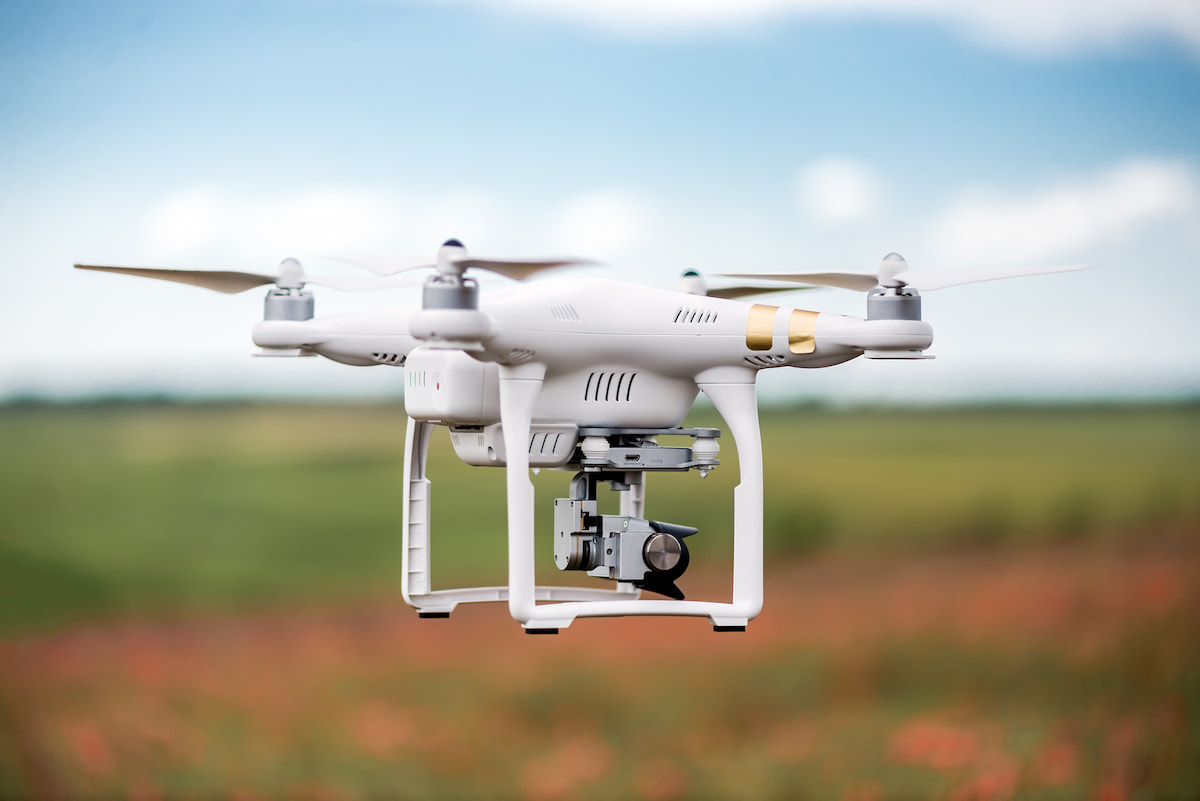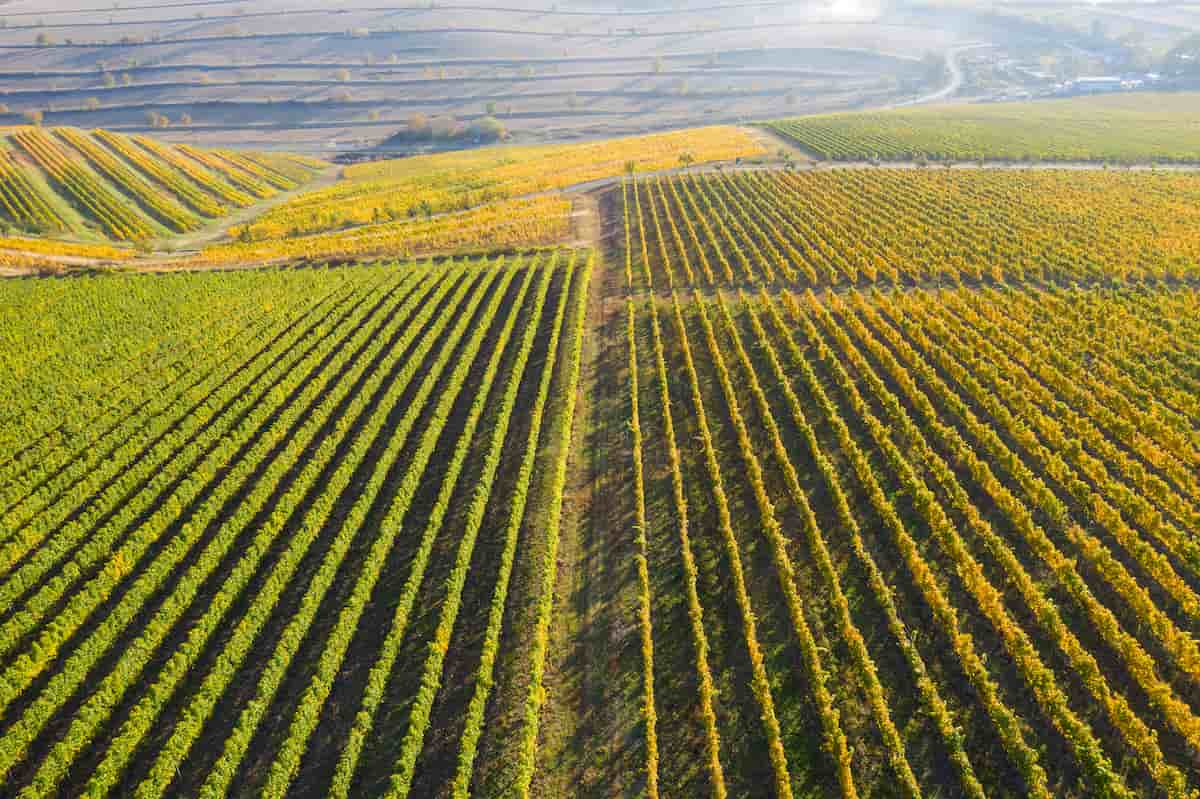Drones can be a great tool for fruit farmers. They can help to monitor crops and track fruit movement. Drones are becoming increasingly popular in the agriculture industry, including fruit farming. From picking to pruning and monitoring, drones have become an important tool for modern agriculture.

Drones for Fruit Farmers
What are Drones?
- Drones are also called unmanned aerial vehicles (UAVs). Drones are aircraft that do not require a pilot on board. Instead, they’re operated remotely by a human pilot or autonomously through software-controlled flight plans.
- In fruit farming specifically, drones can be equipped with cameras and sensors to capture high-resolution images of crops from different angles. Additionally, specialized sprayers can be attached to these devices for the precision application of pesticides or fertilizers.
Benefits of Using Drones for Fruit Farmers
- One common use of drones on fruit farms is for crop monitoring. Using aerial imagery, drones can quickly identify areas of the farm that require attention, such as pest or disease outbreaks. This allows farmers to take targeted action instead of treating the entire crop unnecessarily.
- Drones can also be used for mapping and surveying a fruit farm’s terrain. This information can help farmers decide about planting and harvesting schedules based on soil quality and topography.
- Another benefit of using drones on fruit farms is precision spraying. Drones with sprayers can accurately target specific areas without wasting resources or harming other plants or wildlife.
- Drones can quickly cover large land areas, making crop monitoring and maintenance much more efficient.
- Another advantage is that using drones reduces the need for manual labor, which helps reduce costs while also increasing productivity. Fruit farmers no longer have to spend hours walking through their fields inspecting crops manually – instead, they can rely on their drone’s data collection capabilities.
- Furthermore, using drones for mapping and surveying purposes ensures accurate measurement and identification of different varieties of fruits. Farmers can use this information to plan their crop rotation schedules and improve future harvests.
Fruit-Picking Drones Importance in Agriculture Sector
- Fruit-picking drones are becoming increasingly popular in the agricultural industry, especially among fruit farmers. These specialized drones use advanced imaging technology to detect and locate ripe fruits on trees, allowing them to be harvested quickly and efficiently.
- Farmers can harvest more fruit in less time, increasing productivity and reducing costs.
- Fruit-picking drones also accurately identify which fruits are ripe for picking. This reduces waste by ensuring that only mature fruits are harvested, leading to higher-quality products and increased profits for farmers.
- Another benefit of fruit-picking drones is their ability to operate in difficult terrain or weather conditions. Unlike human pickers who may struggle with steep slopes or adverse weather, these machines can easily navigate challenging environments without risk of injury or discomfort.
In case you missed it: Robotic Bees for Pollination: Tiny Drones for Artificial Pollination in Agriculture, Pros, and Cons

How do Drones Help Fruit Farmers?
- Drones have become an essential tool for fruit farmers due to their efficiency and effectiveness in monitoring crops. These unmanned aerial vehicles can quickly cover large farmland areas, allowing farmers to keep track of their crops’ health and growth progress.
- Using drones equipped with cameras, fruit farmers can detect potential issues such as disease or pest infestations early on. This allows them to take action before the entire crop is damaged or lost. Drones also provide a more accurate assessment of the number and size of fruits on each tree, making it easier for farmers to plan their harvests accordingly.
- One of the primary uses of drones in fruit production is surveillance, where they can monitor crop growth and detect any signs of pests or diseases. Drones with cameras capture high-resolution images that allow farmers to spot issues before they escalate.
- Additionally, drones help map orchards using GPS technology, enabling farmers to determine tree density and identify areas requiring special attention. This data also aids in irrigation management by highlighting regions requiring more water.
- Another significant benefit of drone use is time-saving during harvesting season. Harvesting is a labor-intensive process involving extensive manual labor that takes weeks or months, depending on the orchard’s size. With drones’ help, this task becomes quicker as they can easily fly over trees and collect product samples while reducing the need for human intervention.
- Drone technology has revolutionized fruit farming by increasing productivity and reducing cost overheads through effective monitoring techniques during farming seasons.
Applications of Drones in Fruit Farming
- Crop Monitoring: With the help of drones, farmers can easily monitor their crops from above, giving them a bird’s eye view of their fields. This allows for early detection of pest infestations or nutrient deficiencies.
- Irrigation Management: Drones equipped with thermal imaging cameras can identify areas that require more water than others by detecting variations in soil temperature. Farmers can then adjust irrigation systems to ensure optimal water usage.
- Harvesting Assistance: Drones equipped with specialized tools can assist farmers during harvest by picking fruits from tall trees and transporting them to collection points.
- Disease Detection: Drones can detect diseases before they become visible to the naked eye, allowing farmers to take preventive measures before they spread throughout the orchard. Drones offer a cost-effective solution for fruit farmers looking to increase productivity while reducing labor expenses and crop losses due to pests or disease outbreaks.
Promising Ways to Use Drones in Fruit Production
- Drones have been making their way into various industries, including fruit production. Drones equipped with multispectral cameras can help farmers monitor crop health.
- Drones can be used for precision agriculture through targeted spraying of fertilizers or pesticides only on areas that require treatment rather than entire fields. This helps reduce chemical use and saves time and money while ensuring healthy produce.
- Using drones to map out orchards creates accurate digital maps that visualize tree height, density, and overall canopy cover – important information for efficient resource allocation during harvesting season.
- Drone technology could lead to automation in fruit picking by designing specialized robotic arms with sensors guided by artificial intelligence (AI) algorithms capable of identifying ripe fruits ready for picking without damaging other parts of the plant or causing harm to beneficial insects needed for successful harvests.
In case you missed it: Homemade Fertilizer for Fruit Trees

Conclusion
Drones have proven to be effective tools for fruit farmers. With the ability to quickly and accurately collect data, spray crops, monitor plant health, and even pick fruits, drones can significantly improve productivity and reduce costs on a fruit farm. By investing in drone technology and learning how to use it effectively, fruit farmers can increase their yield while reducing labor expenses.
- Ultimate Guide to Ossabaw Island Hog: Breeding, Raising, Diet, and Care
- Ultimate Guide to Juliana Pig: Raising Facts, Size, Diet, Care, and Lifespan
- Raising Lleyn Sheep: Disadvantages, Price, Uses, Characteristics, and Care
- Ultimate Guide to Meishan Pig: Breed Facts, Breeding, Raising, and Care
- Ultimate Guide to Teacup Pigs: Raising, Diet, Lifespan, Cost, and Care
- Guide to Raising Poll Dorset Sheep: Facts, Profile, Characteristics, Uses, and Care
- Ultimate Guide to Bighorn Sheep: Characteristics, Diet, Lifespan, Breeding, and Lifecycle
- Ultimate Guide to Raising Katahdin Sheep: Farming Facts, Breed Profile, Uses, and Care
- Ultimate Guide to Raising Oreo Cows: Belted Galloways Farming Facts, Profile, Uses, and Care